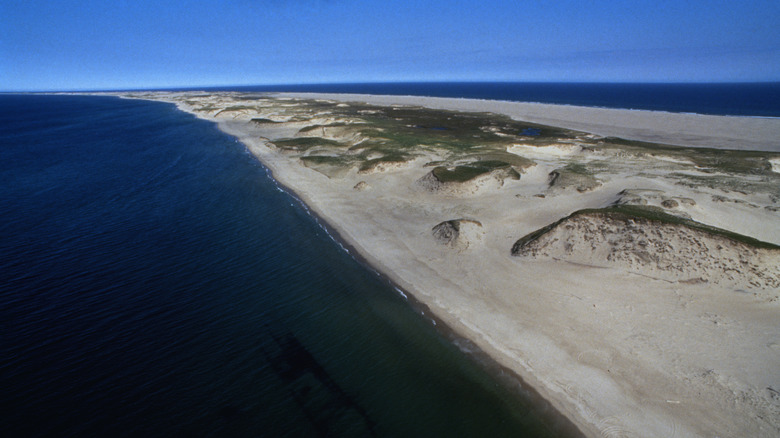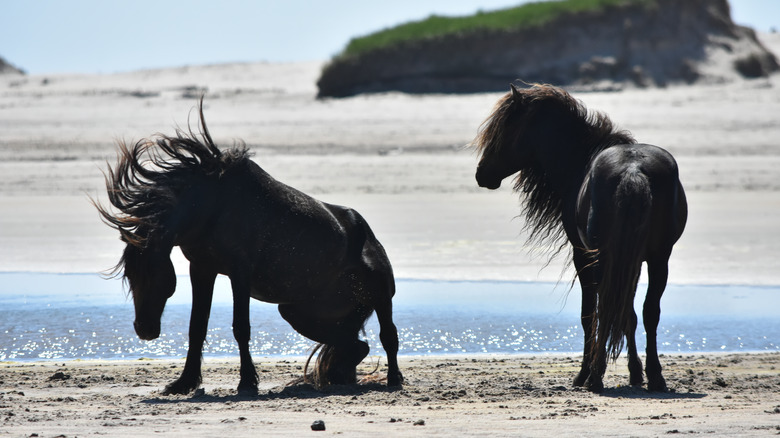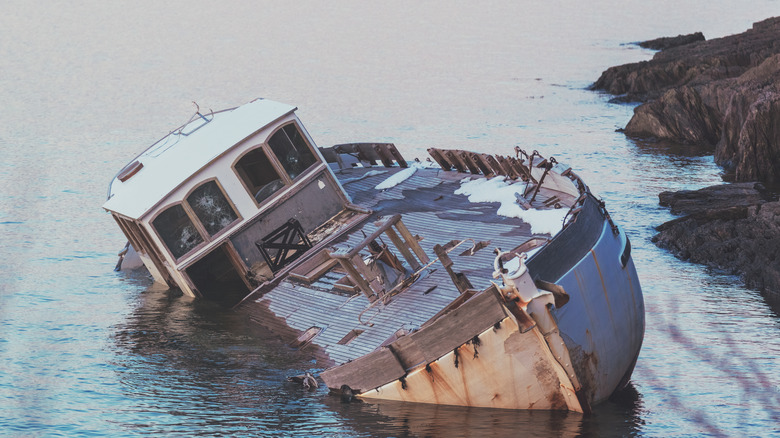This Odd Island Was Ranked As One Of The Most Underrated Travel Destinations In The World
Sable Island is one of Canada's most captivating natural anomalies. With just around five annual residents living on the island, Sable Island is tranquil and absent of commercial development. This destination is far from busy. Yet, it boasts unusual environmental features, a fascinating history, and an unmatched natural beauty. For that reason, a study conducted by U.K. travel and tour company, Explore Worldwide, found that visiting Sable Island was the second most underrated travel experience in the world out of a pool of 356 nominees.
The organization calculated how underrated each travel experience is by judging the relative reviews and popularity they gathered from data via Google search and TripAdvisor. It isn't entirely surprising that Sable Island won this ranking. Situated close to 200 miles from the coast of Halifax, it isn't easy to stumble upon. Another factor making this hidden gem even more under wraps is that it is closed to visitors for five months of the year. On top of all that, you need permission from Parks Canada to visit. And while getting there may take a few extra steps than usual, this equally breathtaking and unique destination is definitely worth it. There is not just one but many things that make Sable Island stand out.
Natural features that make Sable Island so unique
The island sits alone in the middle of the Atlantic Ocean and runs about 25 miles long in the shape of a thin crescent. This landmass is entirely made from sand. Because of its nutrient-lacking soil and windy climate, very few plants grow on the island. Without any trees, the island has a strangely smooth horizon. Because of the constant shifting of sand and the apparent diminishing of the Island's western edge, scientists believe that the island could be moving eastward or disappearing altogether.
One of Sable Island's most recognizable features is its population of wild horses, with around 500 roaming the island. As they're not an endemic species of the island, it's thought that these horses have lived on Sable Island since the late 1700s. Because they are considered invasive, the Canadian government planned to remove the horses at one point. However, when news broke that these horses would likely be wiped out rather than relocated, thousands of Canadian schoolchildren wrote to Prime Minister John Diefenbaker begging to leave the horses alone. As a result, Diefenbaker amended Canadian law, stating that the country would protect and preserve them.
Beyond the wild horses of Sable Island, a variety of fauna call this unique location home, including the world's largest colony of grey seals. Additionally, you'll find around 350 species of birds, making this Canadian island a great destination for wildlife-watching adventures.
More strange things about Sable Island
Because of its location and the surrounding area's rough seas, Sable Island has been the site of at least 350 shipwrecks. The last of these occurred in 1999, and the remains of this ship can be visited on South Beach. Because of this eerie history, the island is known as the "Graveyard of the Atlantic." Along with shipwrecks, an abundance of trash and pollution washes up on its shores. Every year, thousands of deflated balloons are said to fall onto the sands of Sable Island.
Unlike your typical national parks, visitors cannot access the island without receiving permission from Parks Canada. To reach the island, guests can either travel by sea or air. However, they must either travel via a Parks Canada licensed operator or receive special permission for their private transportation. Because the island does not have any airport or runways, all air traffic must land on the beach. That might sound odd, but what can you expect on Sable Island? That's just another thing you won't see anywhere else.


